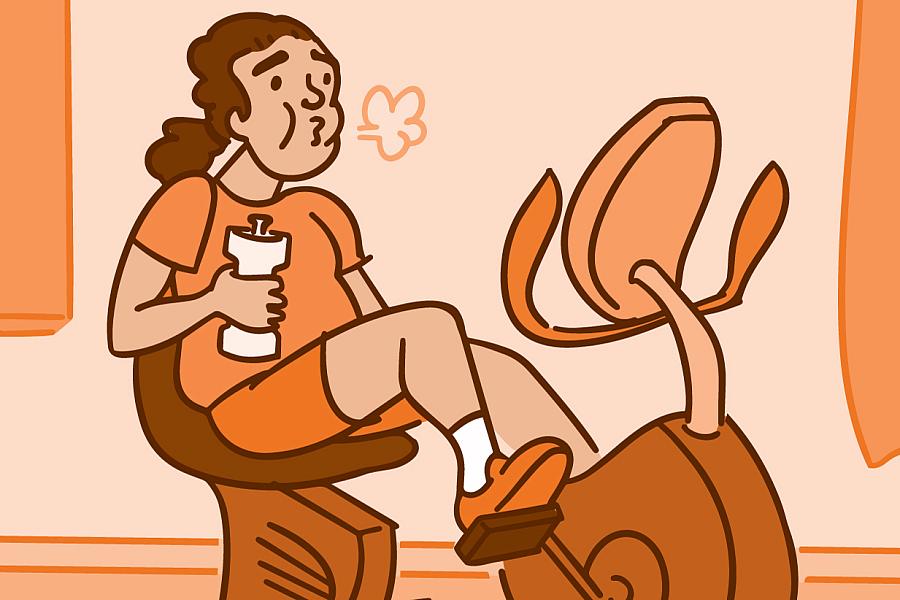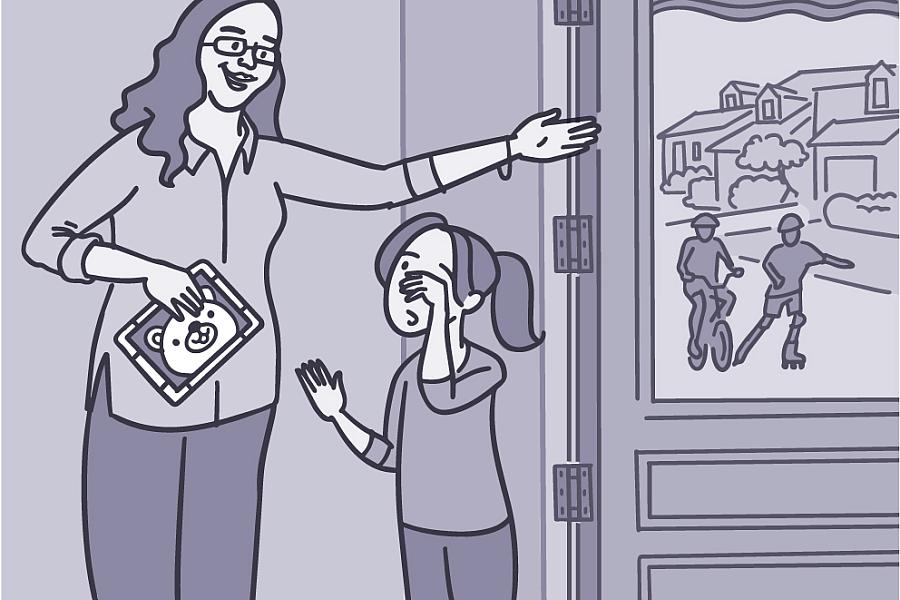Slowing Sarcopenia
Keep Your Muscles Healthy as You Age

Starting at age 30, our bodies naturally start to lose muscle mass. We lose about 3–5% every 10 years. You might not notice the effects at first. But over time, the reduced muscle mass leads to decreased strength. After a while, it can lead to a condition called sarcopenia.
“With aging, you start losing muscle mass, muscle strength, and have some limitations with your activities,” says Dr. Rosaly Correa-de-Araujo, an aging expert at NIH.
Some muscle loss is expected with the natural aging process. But too much muscle loss can lead to mobility difficulties. Sarcopenia can make it harder to stand up from a chair, walk, open a jar, or carry groceries. It can also increase your risk of falling.
Certain factors may make muscle loss worse as you age. These include some chronic illnesses, a lack of exercise, and an unhealthy diet. Hormonal changes that occur during menopause can also contribute.
Researchers estimate that 10–20% of older adults have sarcopenia. But testing people for sarcopenia can be tricky. That’s because there isn’t a widely agreed-upon method to measure muscle loss. It’s also not clear exactly how much muscle someone can lose before it leads to disability or injury. So an NIH-funded team of experts recently set out to better define sarcopenia and its impact on people’s health.
The team analyzed data from several studies that looked at thousands of people aged 65 and older. They focused on three different measures of muscle health: grip strength, walking speed, and lean body mass. Those with weaker grip strength and slower walking speed (less than 2.6 feet per second) showed higher risk of falls, mobility limitations, hip fractures, and death. But lean body mass was not linked with these outcomes. As a result, the researchers recommended using grip strength and walking speed to help assess sarcopenia.
As muscle loss worsens, so can sarcopenia’s effects. Because sarcopenia increases your risk of falling, those who have it are nearly twice as likely to be hospitalized as those without it. Sarcopenia increases the risk of broken bones and the loss of independence with age. It can also make it more difficult for your body to fight certain diseases, like cancer.
You can take steps to prevent too much muscle loss and weakness as you age. Getting enough physical activity is key. In particular, Correa-de-Araujo says, “you need to have resistance training because this is going to help build your strength.” Resistance training can include activities like push-ups, squats, or lifting weights. See the Wise Choices box for more tips on building muscle.
A healthy diet can also help prevent or manage sarcopenia. Your body needs protein to build and maintain muscle. Eating a diet rich in protein can keep your muscles healthy as you age. Experts suggest eating at least 1.2 grams of protein for every two pounds of body weight to treat or manage sarcopenia.
While more research is needed, some dietary supplements have shown promise for preventing muscle loss when combined with diet and exercise. These include amino acids, fish oil, vitamin D, selenium, magnesium, and omega-3 fatty acids.
If you think you might have sarcopenia, talk with your doctor. They can help you make a plan to prevent further muscle loss and preserve your health and independence.
NIH Office of Communications and Public Liaison
Building 31, Room 5B52
Bethesda, MD 20892-2094
nihnewsinhealth@od.nih.gov
Tel: 301-451-8224
Editor:
Harrison Wein, Ph.D.
Managing Editor:
Tianna Hicklin, Ph.D.
Illustrator:
Alan Defibaugh
Attention Editors: Reprint our articles and illustrations in your own publication. Our material is not copyrighted. Please acknowledge NIH News in Health as the source and send us a copy.
For more consumer health news and information, visit health.nih.gov.
For wellness toolkits, visit www.nih.gov/wellnesstoolkits.




